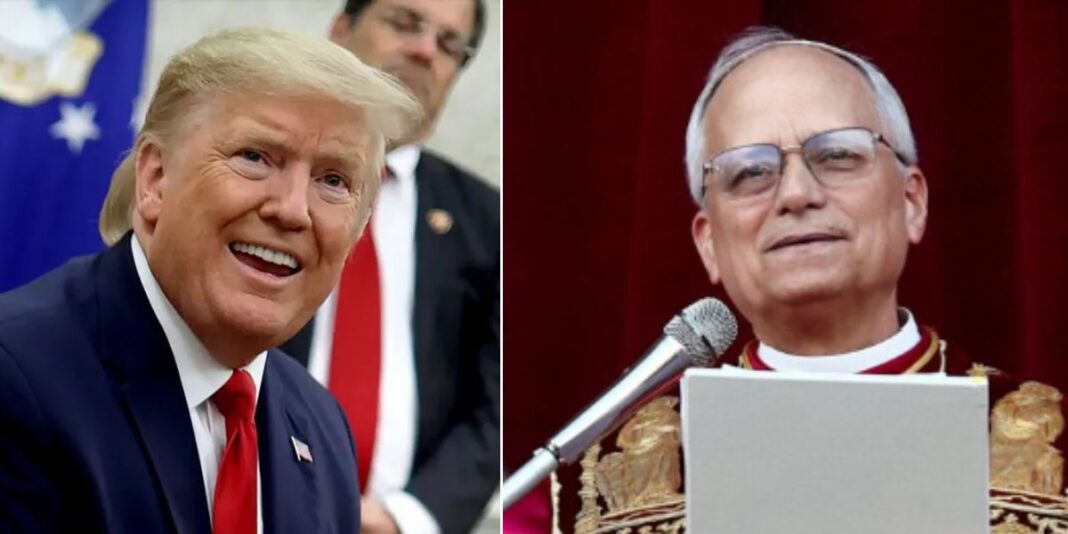Former U.S. President Donald Trump has congratulated Robert Francis Prevost—now Pope Leo XIV—on his election as the first-ever American pope, calling it “a great honor” for the United States.
Prevost, a 69-year-old Chicago native and member of the Augustinian religious order, was elected pontiff on Thursday by cardinals from around the world, making history as the first pope from the United States. His election comes just 16 days after the death of Pope Francis on April 21.


White smoke rose from the Sistine Chapel chimney at 6:10 p.m. Vatican time, signaling the election of the new leader for the world’s 1.4 billion Catholics. It followed two unsuccessful ballots earlier in the day.
Reacting to the news on his Truth Social platform, Trump wrote:
“Congratulations to Cardinal Robert Francis Prevost, who was just named Pope. It is such an honor to realize that he is the first American Pope. What excitement, and what a Great Honor for our Country. I look forward to meeting Pope Leo XIV. It will be a very meaningful moment!”
Trump had drawn attention days earlier when he jokingly suggested he’d like to become pope. The joke spiraled into controversy after an AI-generated image showing him dressed in papal robes circulated online—an image that was also posted from his own Truth Social account.
Following criticism from Catholic groups and the media, Trump denied responsibility for the image, stating:
“I had nothing to do with it… Maybe it was A.I., but I have no idea where it came from.”
When pressed further about the backlash, he dismissed it, saying:
“They can’t take a joke… You don’t mean the Catholics; you mean the fake news media. The Catholics loved it.”


Who is Pope Leo XIV?
Born in Chicago and also holding Peruvian citizenship, Pope Leo XIV has long been admired for his work with marginalized communities and his dedication to the poor and migrants. Prior to his papacy, he led the Vatican’s powerful Dicastery for Bishops, overseeing global appointments of Catholic bishops.
Leo XIV spent much of his pastoral career in South America, particularly in Trujillo and Chiclayo, Peru, where he served as bishop. He holds a degree in mathematics from Villanova University and was ordained a priest in 1982.

His election marks a historic shift and is seen by many as a bridge between the Americas and the Vatican—a symbolic embrace of the global Church’s growing diversity and reach.




